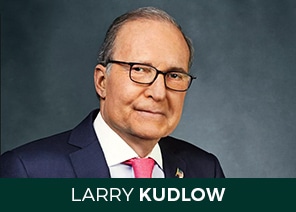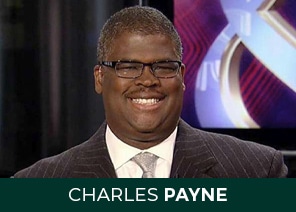Bull markets occur because more people buy near the top of a market than the bottom. Bear markets occur because more people SELL near the bottom, than near the top.

How can investors navigate volatile markets while remaining calm through all types of financial environments? How can they systematically increase their total returns? The key is to avoid emotional investing which leads to both euphoric and depressive behavior – which in turn can lead to poor decision-making.

Investor Behavior
The study of investor behavior has led to a body of knowledge about how easy it is for investors to get caught up in frenzied crowd behavior near market tops and bottoms. These studies attempt to explain the regret that people feel, or the overreaction that buyers and sellers engage in when it comes to money. The reality is that both euphoria and panic are bad for you as an investor.

Sure it’s your right to feel good when your accounts are all up, and we ALL do it, but not to the point where you forget your written strategy for entering and exiting stock positions according a systematic plan. If you don’t have a written, systematic plan that tells you when to buy or sell stock positions, you may want to hire someone who does.
Investing based on emotion (greed or fear) is the main reason why so many people end up BUYING at market tops and SELLING at market bottoms. Underestimating risks associated with investments is why so many people fail.

The Dangers of Emotion in Investing
In personal relationships, we all know that losing our cool and flying off the handle can cause damage to your life—and your health. But when you get over-emotional with your MONEY, damage can be done to your checkbook—and sometimes it can be permanent.
Staying the course through short-term volatility is often the key to longer-term success as an investor—but only if you have the right strategy in the first place. If you find yourself stuck in strategies that worked fine in the 1990s, that’s not good. Now is a very good time to get off your tired old horses, and onto fresh new ones.

The Nineties…
In the nineties, the stock market was a virtual dartboard, and no matter where you threw your darts, you could land on a stock that was going up!! In fact, in publicized events, Chimpanzees throwing darts beat a number of well-known mutual funds!
Back then, in the name of diversification, investors bought MIXED PILES of funds that were large cap, small cap, emerging markets, and you name it! It wasn’t really a strategy, it was kind of an “alphabet soup” approach. Every year, one of those categories would rise to the top, while the rest fell. Sure, you could yell out bingo! for your winners, but overall, you were just doing average. There was no real rhyme or reason your stocks were rising that you could define.
The hodge-podge approach simply doesn’t work. The famous investors who have been written about, followed, and revered are SYSTEMATIC investors. They don’t just buy stuff. They have a well defined strategy and a tactical approach based on mathematics, vision, and control factors that take the emotion out of the equation. Buffett and Peter Lynch are examples.

Good Investing Isn’t a Hope-So Plan
The non-professional investor keeps putting hard-earned cash into the market for the sake of receiving a return that can beat a savings account. It’s a HOPE-SO plan! They’re not sure exactly where they’re going, but they want to get there fast.
They read articles on the best ETFs and stocks, keep adding them to the mix and wait for great results. But their investments lose value due to market developments that come as a total surprise. Like the Corona Virus crash. To professionals it is an opportunity. To others, a disaster.

So, Rule number one for smart investing in the 2020’s and beyond is to get a KNOW-SO plan, not a HOPE-so plan. Build in a strong defense against major downward swings that come out of nowhere. That does NOT mean buying bond mutual funds which have zero guarantees and are paying near zero.
Strengthen Your Portfolio
It’s time for SEGMENTING your portfolio into CATEGORIES which protect against loss to keep you feeling secure, alongside high quality market assets to keep your money growing. The tired, worn out concept of sixty percent in stocks and forty percent in bond funds is OVER.
Yes, that’s right– the sixty-forty stock bond approach is officially dead!
If you are still stuck in it, it is wise to re-think your approach and repurpose your money right now. Get a strategy that works!
If you don’t move into a systematic investment strategy now, you will never break the cycle. In other words, if you keep doing what you are doing, you will keep getting what you’re getting.
Staying Ahead of the Markets
Bull markets are periods when markets move up relentlessly and, sometimes, indiscriminately. When the bull rages, investor sentiment takes over. General exuberance and euphoria rule. This is when the danger begins. Hard data gets thrown out the window. Investors feel like nothing can go wrong. They see market opportunities where there really are none. They get their market intel from news stories, friends, co-workers, TV shows or family members.

This approach cannot end well. The emotion that drives investors toward mistakes in bull markets is known as FOMO, the Fear of Missing Out. Who needs a strategy when prices are rising every day?
The answer of course is that YOU DO. You need a strategy that will keep you on track and not let you go overboard when the market truly gets too high. Your strategy should tell you when it is time to trim stocks and finally take some profits. Not just because it feels good, but because it meets your model’s WRITTEN requirements.
Likewise, when investors read stories about a bad economy, their fear for their investments can fuel selling. Who needs a strategy when someone has yelled fire in a dark theater? Again, the answer is YOU DO. You need a strategy to keep YOUR head when everyone else is losing theirs.

The Time For Action…
Near the top of markets, opportunity to harvest gains and to lock in some profit occurs. Near the bottom of markets, the opportunity occurs to buy the highest quality assets at bargain prices. That’s where we are now.
The IQ Wealth Black Diamond Dividend and Blue Diamond Technology Growth portfolios are built around the strategy of owning only the stock of leadership companies in select sectors of the economy that are here to stay. These portfolios are managed on clear, written strategies that follow rules that have been proven in the trenches. With total fees of less than one percent, this is your opportunity to restart and re-engineer your financial plan.

Steve Jurich is an Accredited Investment Fiduciary® and heads IQ Wealth Management® in Scottsdale, Arizona, a registered investment advisor. He is the host of the daily radio program, Mastering Money on Money Radio.











